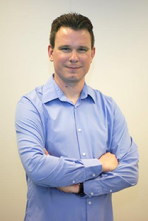 In this thesis the focus is on developing hydrothermally stable microporous membranes to be used in novel water gas shift membrane reactor concepts. ‘Gas permeation properties and hydrothermal stability are by far the most two crucial parameters here,’ Marcel ten Hove says. ‘In various one-step and two-step synthesis methods these properties vary considerably.’
In this thesis the focus is on developing hydrothermally stable microporous membranes to be used in novel water gas shift membrane reactor concepts. ‘Gas permeation properties and hydrothermal stability are by far the most two crucial parameters here,’ Marcel ten Hove says. ‘In various one-step and two-step synthesis methods these properties vary considerably.’
First, the preparation of multi-layered structures in sol-gel derived microporous membranes was investigated, as were the critical characterization techniques throughout the preparation steps. ‘A sol-gel synthesis method using zirconium doping, showed good results right from the beginning,’ Marcel says. ‘It proved an effective strategy for pore size reduction in BTESE [1,2-bis( triethoxysilyl)ethane] membranes, l eading to a large increase in H2/CO2 selectivity.’
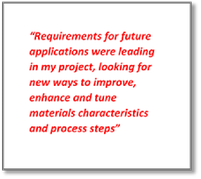
To improve hydrothermal stability, multilayered membranes were investigated in a systematic manner. Phosphorus dopedγ-alumina (acting as an intermediate layer) remained intact when submitted to higher temperatures during 72 hours. ‘When we tested these multilayers with a zirconium doped BTESE coating on top, we observed some surprises,’ Marcel says. ‘Selectivity increased while testing proceeded. We concluded water absorption led to smaller and hence more effective pore sizes.’
Marcel ten Hove concluded his PhD thesis discussing the current status and limitations of silica and hybrid silica membranes, in terms of gas permeation properties and hydrothermal stability. Marcel: ‘By doing so, we are better able to analyze the limited commercial development thus far, and thus identify the areas that require attention.’
ADEM
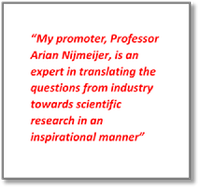
His project was carried out within the cluster Catalysis, Membranes and Separations (CMS) of ADEM (A green Deal in Energy Materials), funded by the Dutch ministry of economic affairs. ADEM is aimed at materializing innovations in energy technologies, in close collaboration with industry.
‘My work was mostly experimental in nature,’ Marcel says. ‘Requirements for future applications were leading in my project, looking for new ways to improve, enhance and tune materials characteristics and process steps.’
Collaboration
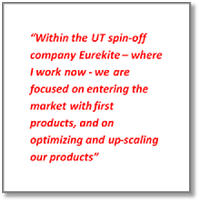
During his project Marcel collaborated with the Julich Forschungszentrum (on hydrothermal stability) and with Professor Hong Qi from Nanjing University (on incorporating dopants into BTESE membranes).
‘My promoter Professor Arian Nijmeijer is an expert in translating the questions from industry towards scientific research in an inspirational manner,’ he says. ‘His first research contacts with Shell stem from many years ago already, leading to fruitfully exchanging expertise with the R&D people within this company.’
Eurekite
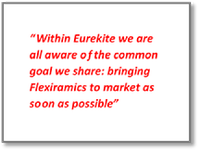
After his PhD Marcel joined the R&D team - consisting of four members already – of the UT spin-off company Eurekite, working on commercial application of its patented “Flexiramics” technology.
‘Working result oriented, designing and building experimental set-ups using sol-gel chemistry expertise will be very helpful,’ he says. ‘Within Eurekite we are now focused on entering the market with first products, and on optimizing and up-scaling our products. I am happy to be member of this R&D team, being able to fully concentrate on working on very interesting R&D topics. We are given freedom to fill in the content of research and choose our strategy routes. Of course, within Eurekite we are all aware of the common goal we share: bringing Flexiramics to market as soon as possible.’
